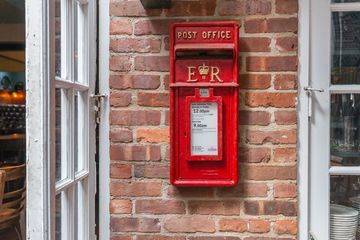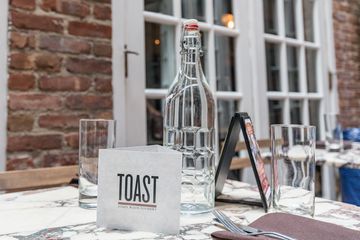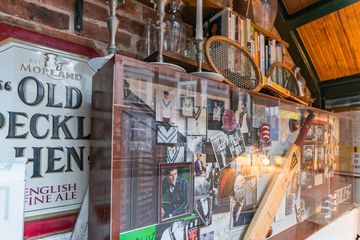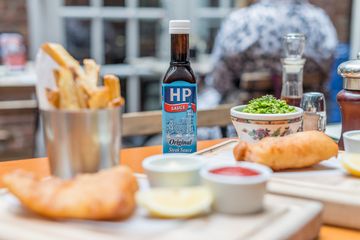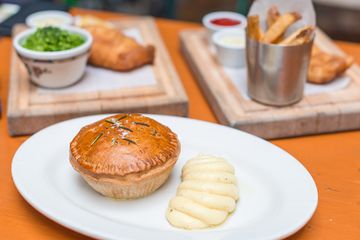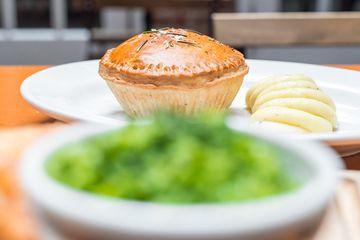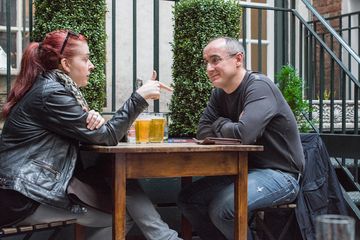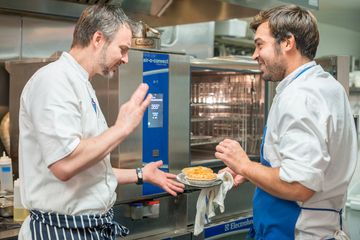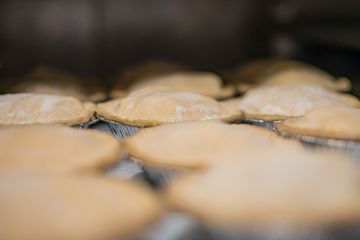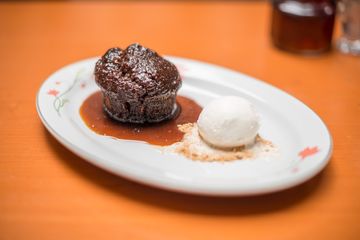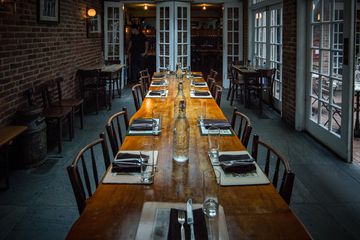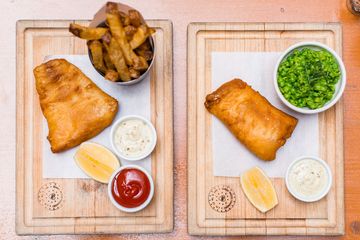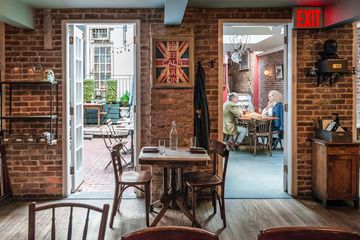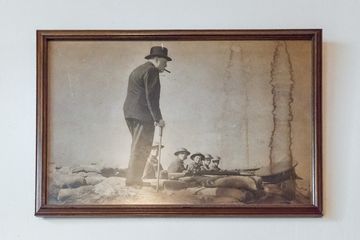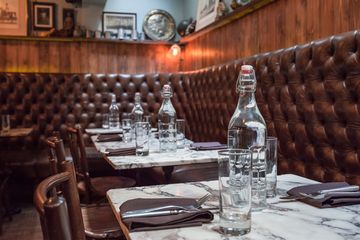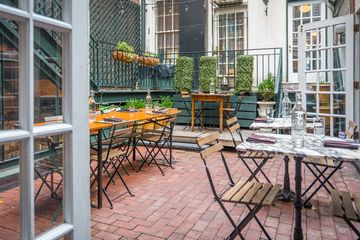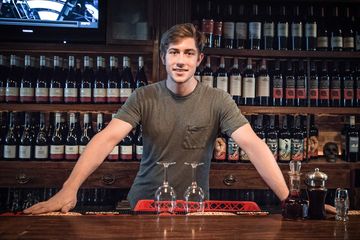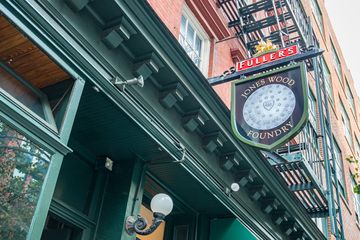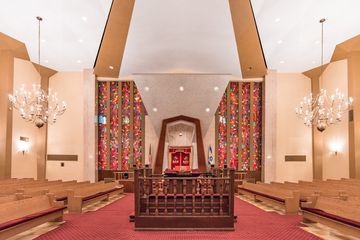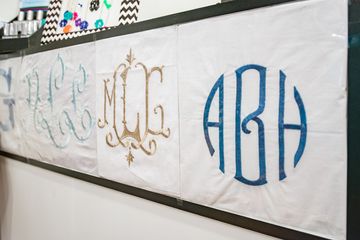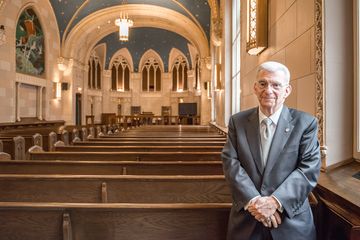
Though I spent a year and a half living in London in my younger years, I did not become nearly as attached to English cuisine as Olivia, a member of the Manhattan Sideways team, did when she lived there. I realized this when her eyes lit up as Arjuna, the executive chef of Jones Wood Foundry, brought out plates of English pies and fish and chips for us to sample. With a huge smile, she dug into the mushy peas, made with fresh peas instead of the traditional canned, and the flaky battered cod. She and Sideways photographer Tom then tackled the meat pie of the day, made in a rosemary crust. I tried the accompanying mashed potatoes, which were impossibly soft and fluffy – I later learned that the kitchen goes through twenty pounds of potatoes and four pounds of butter to make them. We were in taste-heaven.
We dined outside in the charming backyard garden as we spoke to Arjuna who told us about his Indian heritage and his time traveling through Europe. He began by saying that food is deeply tied to love and happiness in Indian culture. “If the mother’s in a bad mood, Indian families eat nothing....So the moral of that is: make your mom happy.” Though Arjuna is a dual citizen, British and American, he has always chosen to stay in the States. He pointed out, “All the kinds of cuisine you could ask for are right here in New York.” He explained that though he had spent a little time in Cornwall in St. Ives, he had not cooked very much traditional English food until joining the Jones Wood team. He learned a lot from Jason Hicks, the owner and former executive chef, who designed the menu and has since taken on more of a consulting role. Jason wanted Jones Wood to be a “food-driven pub,” where people can come in with no expectations and then be wowed. As Arjuna stated, “There’s something for everyone” on the menu, pointing out that they had changed the recipe of the French fries to use canola oil instead of beef fat, so that they would be vegetarian-friendly. Moreover, they are triple cooked and slow fried so that they are extra crispy.
It is not just the food at Jones Wood Foundry that is authentically British – the interior of the restaurant, designed by Yves Jadot, is filled with touches of English culture. There are pint mugs, hunting horns, photos of the English military and Winston Churchill, cricket bats, British bus stop signs, and the obligatory “Keep Calm and Carry On” poster. I expected Arjuna to tell me that the restaurant is home to numerous ex-pats yearning for well-made English food, but instead he said that there are actually a lot of locals who come four to five times a week. “They give me a big hug,” he said with a smile.
The name, despite being Anglican, is possibly the most American thing about the pub. In the nineteenth Century and earlier, the pub's current neighborhood was a forest known as “Jones’s Wood.” It almost became the main parkland for Manhattanites, but lost the bid to Central Park. Shortly afterwards, the building that now houses the restaurant was constructed and occupied by a foundry that produced railings, weather vanes, manhole covers, and many other metal works. When Jason Hicks opened his restaurant in 2009, he chose to name it after the original business that was housed in the space.
After we told him how fun we find it to explore the kitchens of the restaurants that we visit, Arjuna invited us downstairs to watch him make Sticky Toffee Pudding, a traditional English dessert composed of fluffy cake, often with currants, with molten toffee sauce poured on top. Though he appeared to be at ease with us while sitting in the courtyard, it was when he entered these quarters that we noticed he came into his own, like a fish in water. It makes sense: a large part of Arjuna’s life is connected to the culinary world. He even met his wife, now a successful playwright, in a restaurant.
At Arjuna's urging, we ascended the steps back to the garden, where he served us his masterpiece. The dessert, smelling of rich molasses with a scoop of ice cream on the side, was positively scrumptious. Beautiful weather, a lovely setting and a terrific, dedicated chef made for a perfect afternoon.
